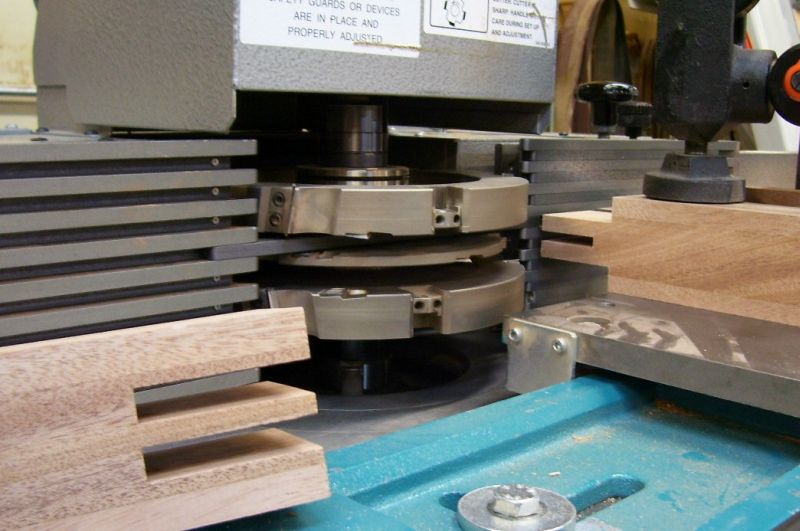Face Glue-Up Techniques for Making Turning Blanks
Woodworkers discuss the face preparation and gluing issues involved in making large blanks for turning. January 9, 2008
Question
I do a lot of glue ups face to face, 4" to 8" wide by 48" long for turning blanks. Typically I face joint on a 16" jointer. I'm wondering what the component manufacturers do. Surely this is not how they do it in a high production setting. Any thoughts?
Forum Responses
(Architectural Woodworking Forum)
From contributor M:
If I have a lot of blanks to glue, I glue panels up, then plane to clean up glue, then rip into 4" or 8" strips, then glue these into blanks to be turned. This might not be what is done in production shops, but it works pretty well for us.
From the original questioner:
I do this as well but what I'm asking about is face gluing once your strips are ready.
From contributor J:
Moulder or finish planer.
From contributor G:
Jointer to straighten, plane to thickness, ready for the clamp rack.
From contributor L:
We run them through the molder.
From the original questioner:
I currently joint a face, plane the other side, and joint again if the planed face is to be glued. Can you put 6" - 8" wide pieces through a molder?
From contributor L:
We have a small Weinig - maximum size piece is 4.75" x 8.7". The beauty of a molder is all the hold-downs and feed rolls that keep the parts held very tightly while being machined. We use the double back carbide knives that we keep very sharp by putting them on the grinder frequently. The molder has a 2-meter long (79") infeed table and fence that function like a jointer infeed table. The result is a very good finish that would be really hard to achieve with a manual jointer. Best thing is you get all four sides done in one pass.
From the original questioner:
Thanks. I would like to source my turning blanks out, and do source out some, but I get quite a wide variety of requests and it is just not feasible to source small jobs out. I don't have any experience with a moulder and suspect it would be quite an investment for my shop at this time, but I plan to start investigating.
From contributor C:
Contributor L is right, a small straightening moulder or S4S machine will make this task easy and the payback is fast if you process much solid wood. We do a lot of face gluing for thick 3 ply door and window parts. Our process is to rip on a straight line saw 10mm over finish width, use the top and bottom heads of our 6” X 10” S4S machine to surface the stock, apply the glue with a Pizzi glue pistol roller, and press in a clamp rack with extended jaws or in a hydraulic door frame press using torsion box culls. After the parts are cured it is one pass back through the S4S machine cutting with all 4 heads to get finish dimensions. Occasionally if stock is twisted or badly cupped, we do a facing pass on the jointer first. There are faster, more automated ways to rip out, apply the glue, and clamp, but this system works pretty efficiently in our 3 - 4 man shop. The Pizzi system is easy to clean up for short runs also.
Without a moulder you can do the initial prep using a jointer with power feed positioned back to back with the planer. This usually requires a second pass through the planer if the jointer does not clean up.
From the original questioner:
Thanks. This is the kind of info I'm looking for. I may post again to get recommendations on a s4s moulder. I looked through some of the used machinery sites today but don't know really what to look for.
From contributor W:
You should go look at some of the shops in Baton Rouge and see the machines in action. That way you can see the equipment first hand. Portiers in Albany sells new equipment and should be able to demo an Extrema moulder and maybe give you some tips on speeding up your process.
From the original questioner:
I'm looking at a used Weinig. Need to see if I can put the money together. I have a 16" Extrema jointer which I really like, but I have seen an Extrema moulder in action and I wasn't impressed. Better to buy a used Weinig I think.
From contributor L:
We bought our Weinig new. Support has been top notch, parts always shipped same day. Time will come when you need parts: damage, errors in setup, wear - at that point you will see the cost of a cheaper machine.
